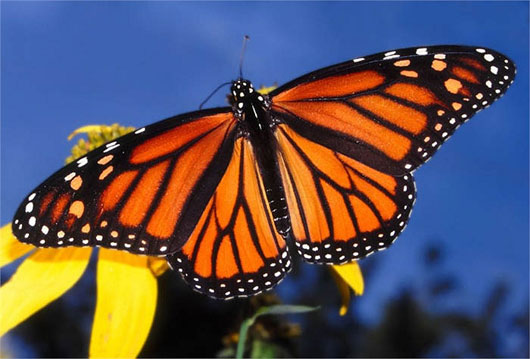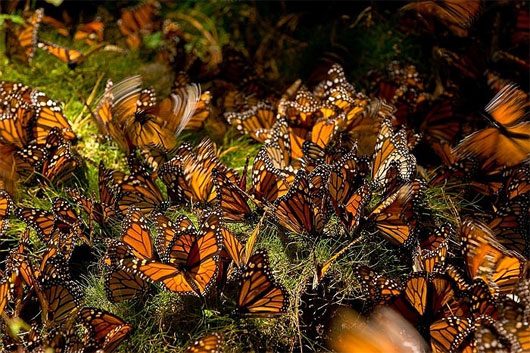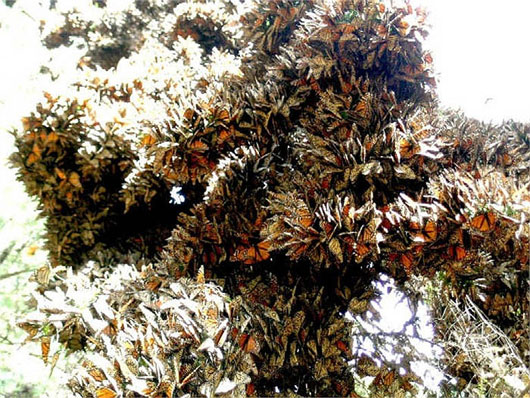Overwhelmed by the sight of billions of migratory monarchs
Monarch butterflies are also called monarch butterflies. They have the scientific name Danaus plexippus. This is the most present butterfly in North America.
Every August, every year, the monarch reigns with a billions of children. They moved from Canada to South America and then returned to Canada in the summer.
Billions of monarch butterflies with colorful wings move in the air like fantasy clouds. They are parked on pine trees or any other trees on the way they migrate, creating beautiful landscapes.

They must pass a long journey of about 3,000km. This is an "endless" journey compared to the strength and longevity of a butterfly. Therefore, to move all the distance of 3,000 km, it will need the replacement of 3 - 4 generations of monarchs.
The destination that the monarchs need to reach for winter is the peak of Urquhart, Michoacan, Mexico. This is the end point and also the beginning of a new cycle.

The monarch butterfly breeds all the way to migration. The last generation of butterflies for each migration period has the highest life expectancy, about 7-8 months or longer. During the Eastern stay, the last generation of butterflies will have a "strike" period. In the next 2 - 3 years, they start to reproduce.
The wings of the butterfly butterfly have orange-black pattern and white spots, with an average wingspan of about 10cm. The body is about 5cm long when mature. Female monarchs are darker than male monarch butterflies. However, male butterflies have a slightly longer wing length and body weight than female butterflies.

Like other insects, monarch butterflies have 6 small legs. However, they usually only walk with 4 hind legs, while the 2 front legs are close to the body. King butterflies are the only species in the butterfly family that have a habit of migrating to avoid chilling like birds.

When mature monarchs often suck bile and pollen. Male butterflies often land on wet ground and rocks to absorb water vapor and minerals. People often call this behavior their "mud bath". The habitat of monarchs are fields, parks, gardens and curbs.
The tree that the monarch butterfly likes, choosing to lay eggs is cotton. After that, the small worms eat cotton leaves to grow.

In recent years, due to climate change, farmers use pesticides and herbicides to accidentally kill the majority of butterfly larvae. Now Mexican local authorities have planted many different colors of flowers to welcome the monarch butterfly and ban them from killing them. The government will impose a $ 1,000 fine on those who intentionally kill the monarch.
- Learn about the existence of billions of birds
- Dance dead
- Decode the phenomenon of
- In the past year, thousands of butterflies have evaporated, but scientists do not know why
- The magnificent beauty of the monarch butterfly
- Migratory birds are not picky to stop
- 'Secret' about the late Man and the Love of the work at first sight
- The Argentine typhoon sealed the end of the world?
- Video: Journey by three round trips to the Moon of the Arctic Circle
- The number of tuna crabs migrated along the US seabed
- Three-colored crabs invaded the Pig Bay in Cuba
- World's first airport for birds in China
 Why do potatoes have eyes?
Why do potatoes have eyes? 'Tragedy' the world's largest carnivorous life: Death becomes ... public toilet
'Tragedy' the world's largest carnivorous life: Death becomes ... public toilet Tomatoes were once considered 'poisonous' for 200 years
Tomatoes were once considered 'poisonous' for 200 years Detecting microscopic parasites on human face
Detecting microscopic parasites on human face